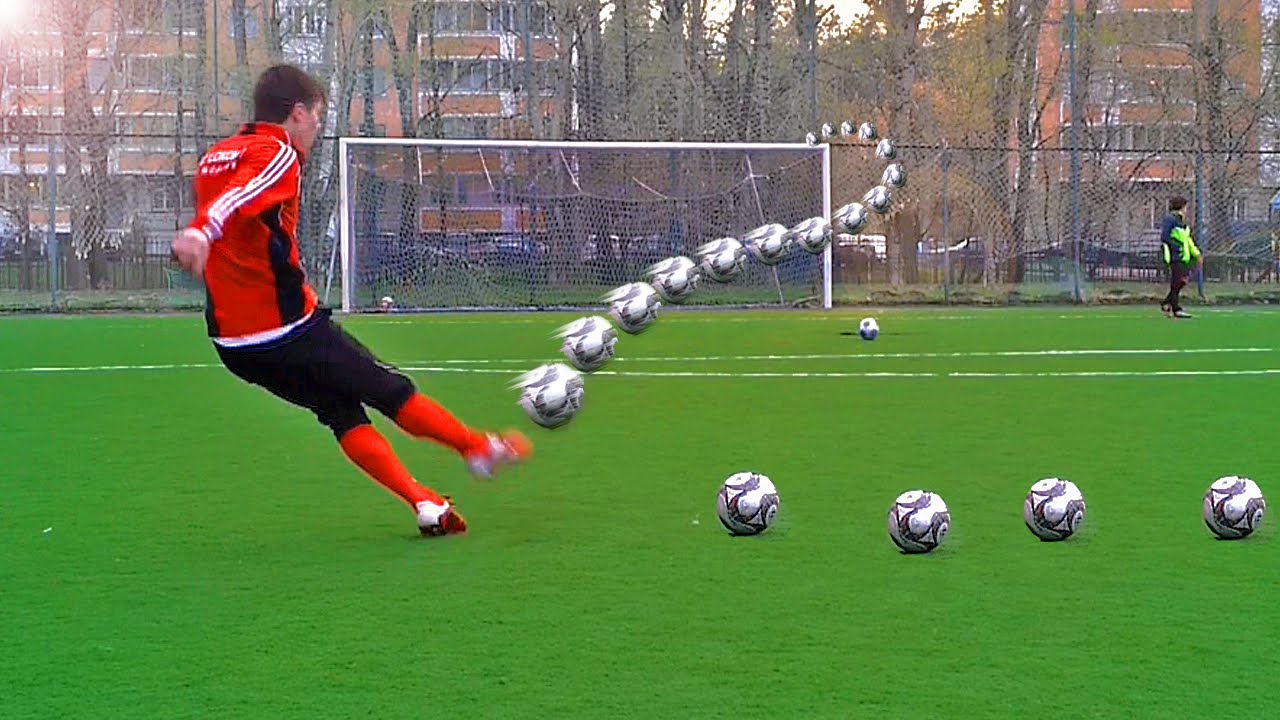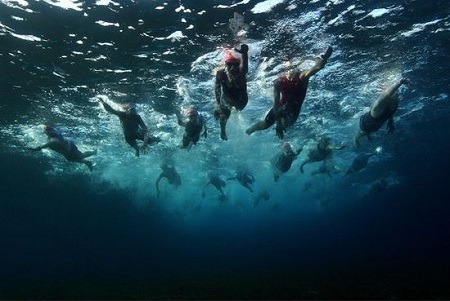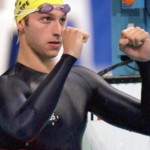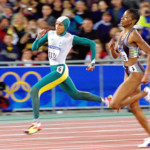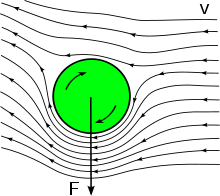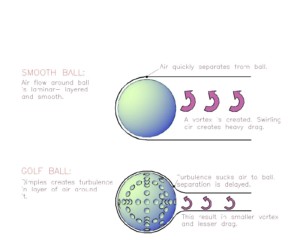Fluid resistance refers to the forces a fluid places on a moving object in the opposite direction to the movement, also known as drag. Drag is the force created by a fluid to resist the motion of an object through it. There are 2 main sources of drag: pressure (form) and friction.
Pressure drag is the force created by the changes in pressure of the fluid as the object moves. First the pressure at the front of the object increases as the fluid is pushed around the object. You make have felt “wind” from a fast moving vehicle such as a truck or train as it went by. This is the air adjusting to the increased pressure caused by the moving object, the air moves away from the object. You can see this at the front of the car in the image below as the fluid separates to move over the car.
At the rear of the object there is another change in pressure, this time a decrease in pressure. This lower pressure in the fluid causes the fluid to move in towards the object that is moving to fill in the space it leaves behind it. The movement of this fluid at the back of the moving object is often referred to as turbulence. You can see this low pressure behind the car to the right as the air moves back in behind the car.
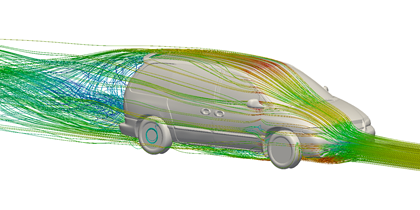
Different shaped objects create receive various amounts of pressure drag. The more front on the object, such as a square, the more pressure drag created. This can be seen as the fluid has to move more widely and creates more turbulence behind the square.
Whereas a streamlined foil creates less pressure drag due to its shape causing smaller changes in pressure. This is known as streamlining, where the object becomes as narrow and as straight as possible.
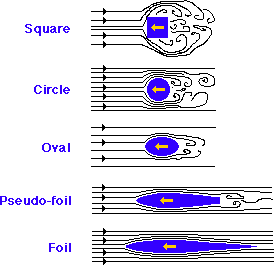
An example of pressure drag being used to the athlete’s advantage comes in skydiving. Here the athlete uses the pressure drag to control their fall and then, with the release of their parachute, rely on it for safety.
-
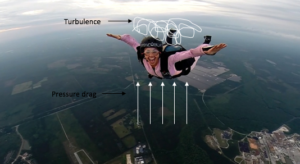
- The sky diver opens their body up as much as possible to slow their fall down using drag, or can bring their body together to reduce drag and speed up their fall.
-

- The air is caught in the parachute, creating a large upwards force. The parachute, also causes a large amount of turbulence above it as it falls towards the ground
The other form of drag is caused by friction between the air particles moving past the object and the surface of the object. In many sports, particularly swimming, clothing and equipment has been adjusted in order to cause less friction. Examples include the swim cap, goggles, and swim suits that cover larger portions of the body, such as the full length suit, which was banned from competition in 2010. Similar, full length suits have been used in sprinting as well, including the suit worn by Cathy Freeman in the 400m at the 2000 olympic games in Sydney.
Other ways that athlete’s have used fluid resistance to their benefit is in the multiple sports that involve balls. Whether it be football, rugby, AFL, tennis, or netball; athletes have learnt to use fluid resistance to change the movement of the ball through the air.
The easiest example of this is the athlete using what is called the Magnus effect. The Magnus effect refers to the use of spin on a ball and the resultant changes in force that cause the ball to move in the air. When a ball spins through the air, it captures a layer of air around its surface. This air then collides with the air the ball is moving through, causing the air to slow down and cause high pressure on the side where the ball and the air caught on its surface is moving in the opposite direction of the air going past the ball.
Conversely, on the other side of the ball, the layer of air is moving in the same direction as the air going past the ball, therefore speeding the movement of air up, and causing low pressure. This pressure difference then makes the ball move in the direction from high pressure to low pressure.
The images on the right show this, as the top ball moves right to left, the air underneath the ball collides with the surface air, slowing down, while the air on the top speeds up. This then causes an upward Magnus force. Conversely, the ball at the bottom is moving left to right and has high pressure above the ball and low pressure below it, causing a downward Magnus force.
Of course this does not just apply to top and back spin. If the ball is spinning sidewards, than the ball will move in the direction of the spin on the ball. As seen in the video below of free kicks in football.
Throughout this dot point, your learn to asked you to:
- describe how principles of fluid mechanics have influenced changes in movement and performance, eg technique modification, clothing/suits, equipment/apparatus
So far we have already mentioned changes in technique, such as the curved free kick, or the use of top and back spin in tennis, and athlete’s also streamline their body in the water when swimming. We have also mentioned a few clothing modifications, such as the full length body suits in swimming and sprinting which help to reduce drag. Finally, we also mentioned the use of equipment such as parachutes that use drag to bring the athlete to the ground safely.
Other equipment advances include the addition of dimples on the golf ball, that help reduce turbulence and drag by capturing a thin layer of air around the surface, and the use of pointed kayaks for racing to cut through the water, helping reduce form (pressure) drag.

